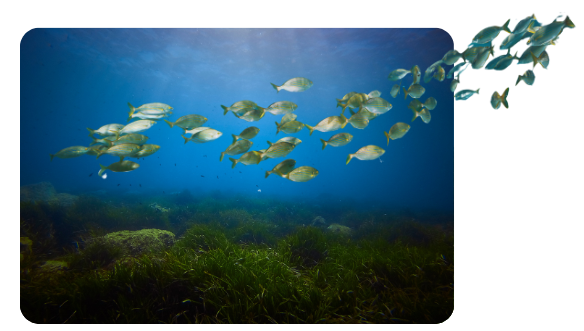Project
Quantifying the contribution of sympagic versus pelagic diatoms to Arctic food webs and biogeochemical fluxes (MOSAiC SYM-PEL)

Project Start: January 2020 | Project End: December 2022
Project Funder: NERC
Principal Investigator: Dr Angus Atkinson
At the base of the Arctic food web, there are three major primary producers: small flagellates, diatoms living in open water (pelagic) and diatoms growing in sea ice (sympagic). The role of the sea ice diatoms is perceived differently across the research community. For ecologists they are central to the polar ecosystem, while those looking at global ocean scales consider them less important and have not incorporated them into their models projecting climate change feedbacks.
This may reflect their minor (<10%) contribution to the total primary production in Arctic waters. However, two newly developed trophic marker approaches that can trace diatoms from sea ice and open water within the food web, consistently find a strong ice algae ‘signal’ in polar consumers. Even in whales, seals and polar bears, as much as 80% of their body fat reserves are from carbon originally fixed by ice algae. How is this possible? How will this change in a warming Arctic? This project aims to answer this puzzle and to bridge the gap between the contrasting perceptions of ice algae.
MOSAiC SYM-PEL will quantify the relative importance of ice algae vs. open water diatoms for consumers living in the high Arctic – considering different species, regions and times of the year. It will also look at material that sinks to the seabed, and is collected in sediment traps.
Two theories will be tested:
- The input of ice algae to Arctic food webs and to export fluxes is disproportionately higher than their contribution to total primary production.
- It is not just the total annual amount of food that matters; it also has to arrive at the right time, be accessible and be nutritious.
Project scientists will take part in an ice drift across the Central Arctic Ocean (MOSAiC) that will give the opportunity to sample the food web and collect material from sediment traps for subsequent analysis at PML.
The cruise data set will be complemented with data from other Arctic expeditions and then computer models will allow scaling up to the whole Arctic Basin. By helping to bridge between the physical, biogeochemical and ecological functions of sea ice and requirements of large-scale modelling, MOSAIC SYM-PEL aims to improve our understanding of the changing Arctic and its provision of services to mankind.
